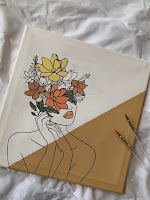The Significance of Colors in Art: Symbolism and Emotional Impact
#ColorInArt #Symbolism #EmotionalImpact #ArtisticExpression #ColorTheory
Colors have a powerful influence on our emotions and perceptions, and when utilized in art, they can evoke a myriad of feelings and convey profound messages. Artists throughout history have harnessed the significance of colors, employing them as tools to express their ideas, provoke reactions, and communicate on a deeper level. In this blog post, we delve into the world of color in art, exploring its symbolism and emotional impact, and uncovering the ways in which artists use colors to create powerful and resonant visual experiences.
Color Symbolism:
Colors possess inherent symbolic meanings that vary across cultures and contexts. Understanding these associations allows artists to tap into the rich language of color and imbue their artwork with deeper layers of meaning. Here are a few examples of color symbolism:
1. Red: Often associated with passion, love, and energy, red can convey strong emotions and intensity. It can also symbolize power, courage, or danger, depending on its context.
2. Blue: The color blue is frequently linked to calmness, tranquillity, and serenity. It can evoke a sense of peace, spirituality, or even sadness, depending on its shade and usage.
3. Yellow: Vibrant and energetic, yellow often represents happiness, joy, and optimism. It can also symbolize intellect, creativity, and enlightenment.
4. Green: Green is closely tied to nature, symbolizing growth, renewal, and harmony. It can evoke a sense of balance, freshness, and fertility.
5. Black: Associated with mystery, darkness, and even death, black carries a sense of power, elegance, and formality. It can also represent rebellion or the unknown.
Emotional Impact:
Colors have a direct impact on our emotions, triggering psychological and physiological responses. Artists skillfully leverage this emotional impact to create specific moods or elicit particular reactions from viewers. Here are some ways in which colors can evoke emotions:
1. Warm Colors: Colors like red, orange, and yellow tend to create a sense of warmth, energy, and excitement. They can evoke feelings of passion, happiness, and enthusiasm.
2. Cool Colors: Blues, greens, and purples have a calming effect and can elicit emotions such as tranquillity, serenity, and introspection. They are often associated with feelings of peace and relaxation.
3. High-Contrast Colors: Combinations of contrasting colors, such as black and white, or bold complementary colors, can create visual impact and evoke a sense of tension, drama, or dynamism.
4. Monochromatic Colors: Utilizing different shades and tones of a single color can generate a harmonious and soothing effect, while also allowing for subtle nuances of emotion.
Artistic Expression and Color Theory:
Understanding the significance of colors and their emotional impact enables artists to communicate their intentions effectively. Color theory, a framework that explores the relationships between colors, helps artists make deliberate choices in their artwork. It guides decisions regarding color combinations, contrasts, and harmonies to achieve specific effects.
By consciously selecting colors based on their symbolic meanings and emotional impact, artists can create visual narratives that resonate with viewers, conveying messages and eliciting emotional responses beyond the realm of words.
Colors are an integral part of artistic expression, offering a rich palette of symbolism and emotional impact. Artists harness the power of colors to communicate their ideas, provoke emotions, and immerse viewers in profound visual experiences. Understanding the significance of colors and their psychological effects deepens our appreciation of art and allows us to engage with the intricate dialogue between color and human perception. So, let us explore the mesmerizing world of color in art and embrace the vibrant emotions it evokes, one brushstroke at a time.




Comments
Post a Comment